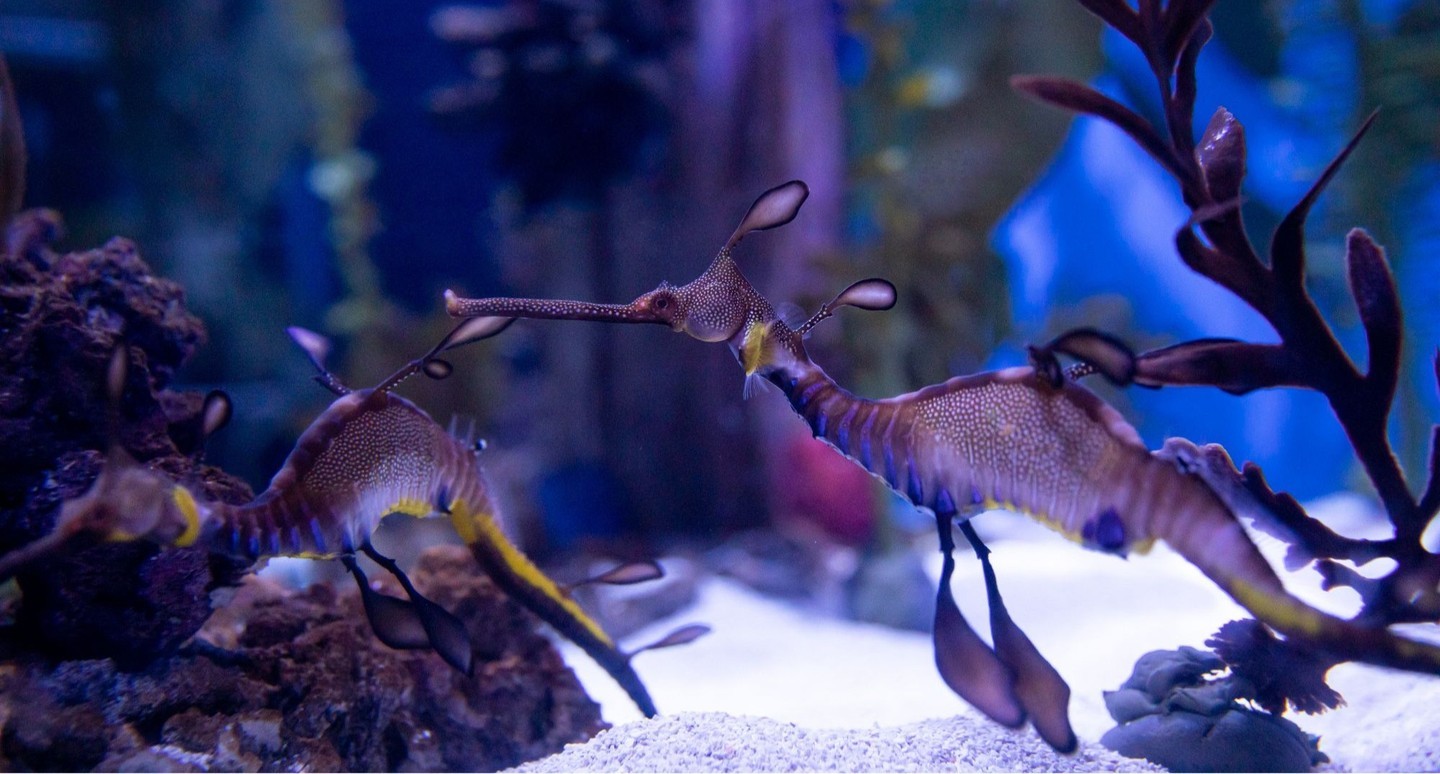- Morphology and Adaptation: Examine the distinct features of weedy sea dragons and their survival strategies in their natural habitat.
- Reproduction and Lifecycle: Explore the reproductive behaviors and the unique role males play in carrying and incubating eggs.
- Habitat and Distribution: Discuss the natural environment of weedy sea dragons, including their geographical distribution and preferences.
- Conservation Status: Analyze current threats to weedy sea dragons and efforts being made to preserve their populations.
- Role in Marine Ecosystems: Investigate the ecological importance of weedy sea dragons and their interactions within underwater ecosystems.
Weedy sea dragons, scientifically known as Phyllopteryx taeniolatus, are captivating marine creatures known for their intricate appearance and mesmerizing movements. These marine fish belong to the same family as seahorses, the Syngnathidae, and are native to the waters off southern and eastern Australia. Their unique morphology and adaptations play a critical role in their survival. Weedy sea dragons boast an elongated body covered in leaf-like appendages that provide them with excellent camouflage among seaweeds and kelp beds. This natural mimicry allows them to blend seamlessly into their environment, evading predators while ambushing tiny prey like zooplankton and small crustaceans.
The body of a weedy sea dragon is adorned with stunning patterns and colors, including hues of orange, yellow, and purple, often outlined in blue. These colors not only aid in camouflage but also serve as a communication mechanism with potential mates. Unlike many other fish, weedy sea dragons do not have a prehensile tail, which limits their ability to anchor onto substrates. Their movement is instead graceful and swaying, achieved by small dorsal and pectoral fins that paddle rapidly.
A particularly fascinating aspect of weedy sea dragons is their reproductive process. In these species, it is the males who take on the role of carrying and tending to the offspring. During the mating season, usually from November to January, the courtship ritual begins. The male and female perform synchronized movements in midwater, which is believed to strengthen their pair bond. The female deposits up to 250 bright pink eggs onto a specially designed brooding pouch on the underside of the male’s tail. As the eggs adhere to this spongy surface, they are fertilized. The male then carries these eggs for about four to six weeks, providing them with protection and aeration until they hatch into juvenile sea dragons. This unique reproductive strategy underscores the diverse reproductive roles found in the animal kingdom and highlights the evolutionary adaptability of these sea creatures.
Weedy sea dragons inhabit temperate coastal waters, particularly around the southern coasts of Australia, including Tasmania. They are generally found in kelp forests, rocky reefs, and seagrass meadows, where the water depth ranges from 3 to 50 meters. These environments are rich in both food and cover, offering a perfect sanctuary for these fish to thrive. The intricate habitats they occupy are, however, susceptible to environmental changes and human-induced threats. Coastal development, pollution, and climate change are impacting their natural habitats, making it increasingly challenging for these species to survive.
The conservation status of weedy sea dragons is currently classified as "Near Threatened" by the International Union for Conservation of Nature (IUCN). Efforts to preserve weedy sea dragon populations involve habitat protection and monitoring population trends. Marine protected areas and legal protection in several regions have been established to safeguard their natural environments. Raising public awareness about the importance of preserving these habitats is a crucial strategy in enhancing conservation efforts.
Weedy sea dragons play a significant ecological role in marine ecosystems. As part of the food web, they help control the populations of their prey species, maintaining a balance in the underwater world. Their presence indicates healthy ecosystems, as they require specific environmental conditions to flourish. Through their intricate interplay within these systems, they contribute to sustaining biodiversity in marine habitats.
In conclusion, understanding the biology and ecology of weedy sea dragons offers insight into the delicate balance of marine ecosystems. As captivating symbols of the ocean’s beauty and complexity, their continued observation and conservation can provide valuable lessons in marine biology and environmental stewardship. The plight and charm of weedy sea dragons remind us of the urgent need to preserve our natural world for future generations.
*****
Source Description
@cassie.lynne asked to learn more about weedy sea dragons 🪸 Comment an animal you’d like to see posted!
Similar to sea horses, sea dragon males carry eggs until they are ready to hatch!
When mating, the females deposit bright pink eggs onto the spongy patch under the male’s tail, and the eggs become fertilized in the process. The eggs incubate (develop), and remain carried by the males for four to six weeks until they grow into miniature sea dragons!
Image Description: Two weedy sea dragons swimming in a vibrant underwater scene with aquatic plants and sand.


